
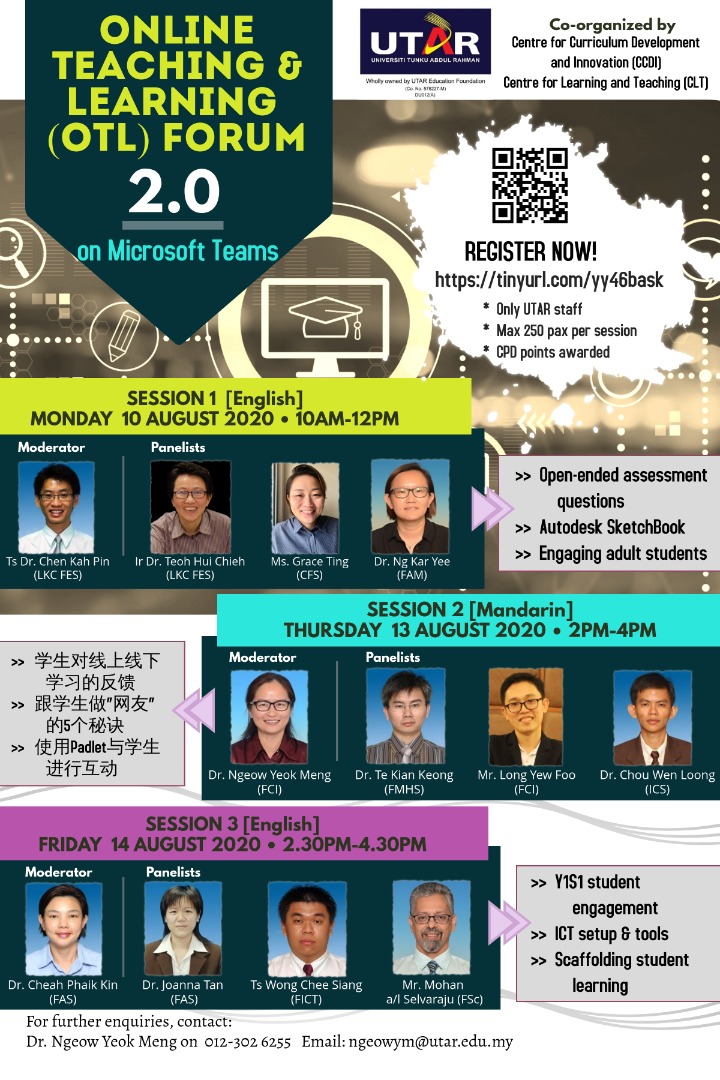
Online Teaching & Learning (OTL) Forum
In light of the recent pandemic,
UTAR has thoroughly changed their learning system, where face-to-face
teaching and examinations have been replaced with online teaching and
learning (OTL) and final assessments. This transition has not only been hard
on students but for lecturers as well, as they have to employ different
teaching methods, in order to effectively teach and engage with their
students. Thus, following the success of the first forum “OTL Forum: My
Personal Journey”, another online forum titled “Online Teaching and Learning
(OTL) FORUM 2.0” was co-organised by UTAR Centre for Curriculum Development
and Innovation (CCDI) and Centre for Learning and Teaching (CLT). The forum
was split into three sessions; the first session was held on 10 August 2020,
followed by the second and third on 13 and 14 August 2020 respectively. All
sessions were held via Microsoft Teams. The forum also saw a total of 200
participants across all three sessions.
The forum aimed to enhance the
digital skills and pedagogies of the academic staff. During the three
sessions, a total of nine panellists from different faculties of both
campuses shared their own experiences in OTL pertaining to e-learning
pedagogy, student engagement and specific OTL tools. Speaking in the first
session were Faculty of Accountancy and Management Head of MBA/MBA
(Corporate Governance) Programme Dr Ng Kar Yee, Lee Kong Chian Faculty of
Engineering and Science lecturer Ir Dr Teoh Hui Chieh and Centre for
Foundation Studies lecturer Ting Jen Ching. The first two sessions were
moderated by Faculty of Creative Industries (FCI) Deputy Head of CCDI Dr
Ngeow Yeok Meng while the last session was moderated by Faculty of Arts and
Social Science lecturer Assoc Prof Dr
Cheah Phaik Kin.
The first speaker, Dr Ng’s session
focused on her experiences in engaging with adult students, as she is in
charge of 62 Masters in Business Administration (MBA) students. “Adult
students are harder to teach, since they are purposeful and competent in
nature, so they know what they want to learn from the course and can be
sometimes too direct or less open-minded. These students also have multiple
responsibilities, such as busy work schedules and family commitment, which
is why I am quite flexible with them in terms of time,” said Dr Ng when
explaining the characteristics of the adult students.
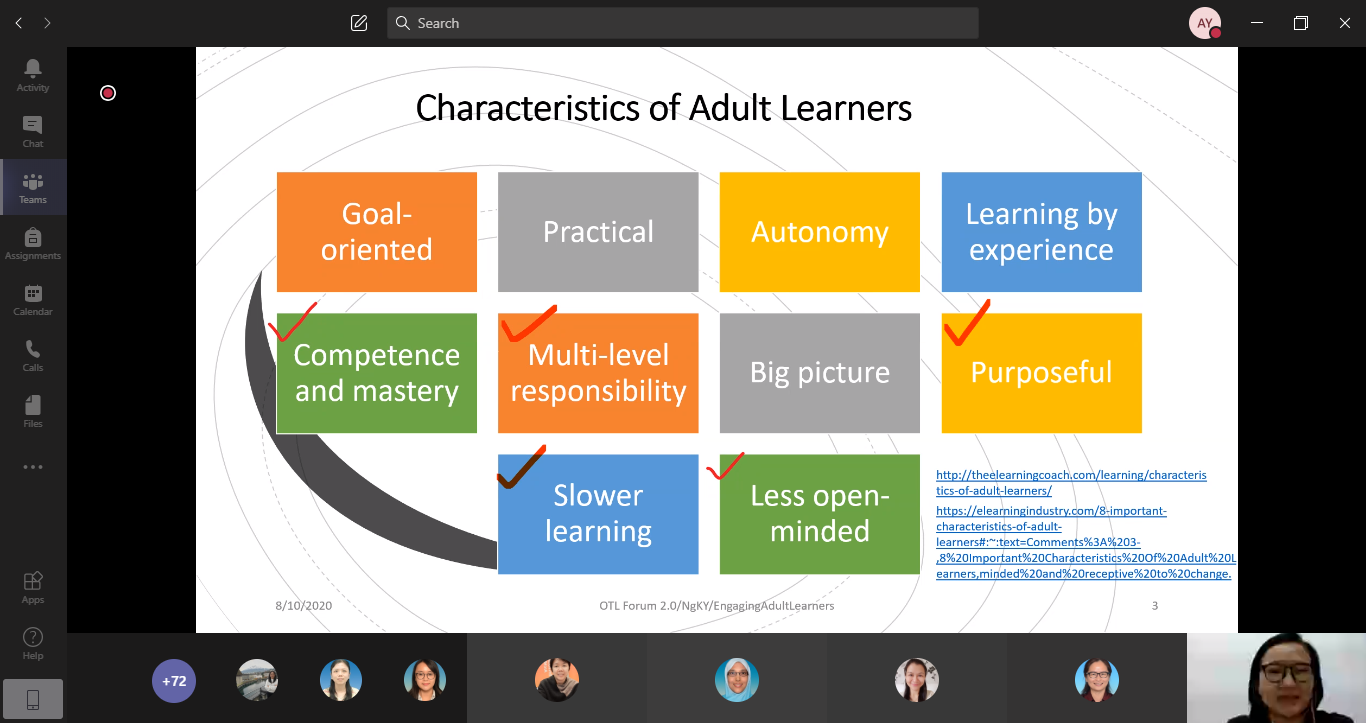
Dr Ng explaining
the adult students’ characteristics
Dr Ng then explained her methods
of conducting online classes with her students, in which she stated, “It can
be difficult to teach and engage these adult students online as they can be
very busy. So, I used several methods, such as case studies, hands-on
practice and problem-solving questions. The most efficient method is using
the SmartBook, which is a sort of e-textbook platform. SmartBook has so many
helpful functions other than allowing my students to use the textbook they
need, such as giving test questions, creating quizzes and arranging
assignments.” Her students told her that the SmartBook was useful and
convenient, especially since they do not need to travel a long distance to
attend class.
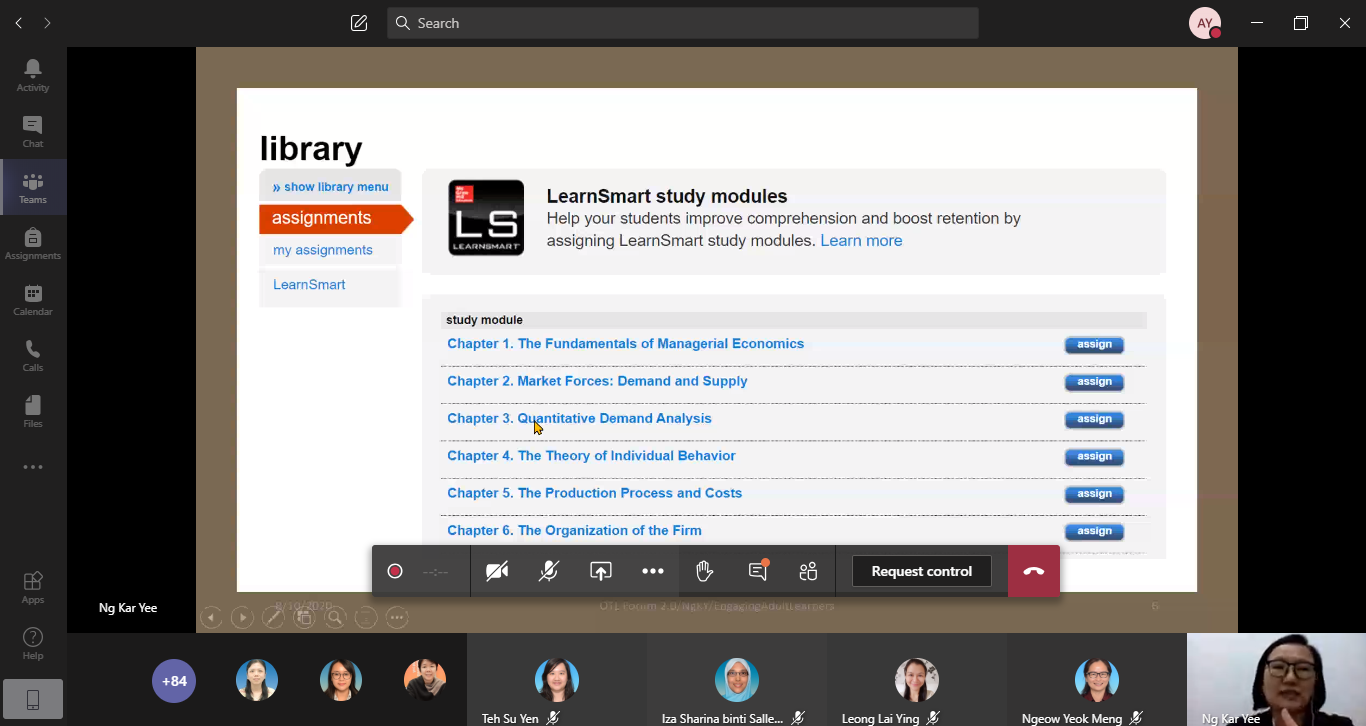
Dr Ng showing the
functions of SmartBook
Dr Teoh, the second speaker,
continued the forum by speaking about open-ended questions. She started her
talk by explaining the multiple definitions of the open-ended question.
“Whenever I ask my colleagues about their definition of an open-ended
question, the two common answers that I would receive are ‘questions that
cannot be found in the book’ and ‘questions that have no right answer’.
However, there is no specific definition; it can be mostly described as
questions that are designed to encourage a full and meaningful answer using
the subject’s own knowledge and feelings,” said Dr Teoh.
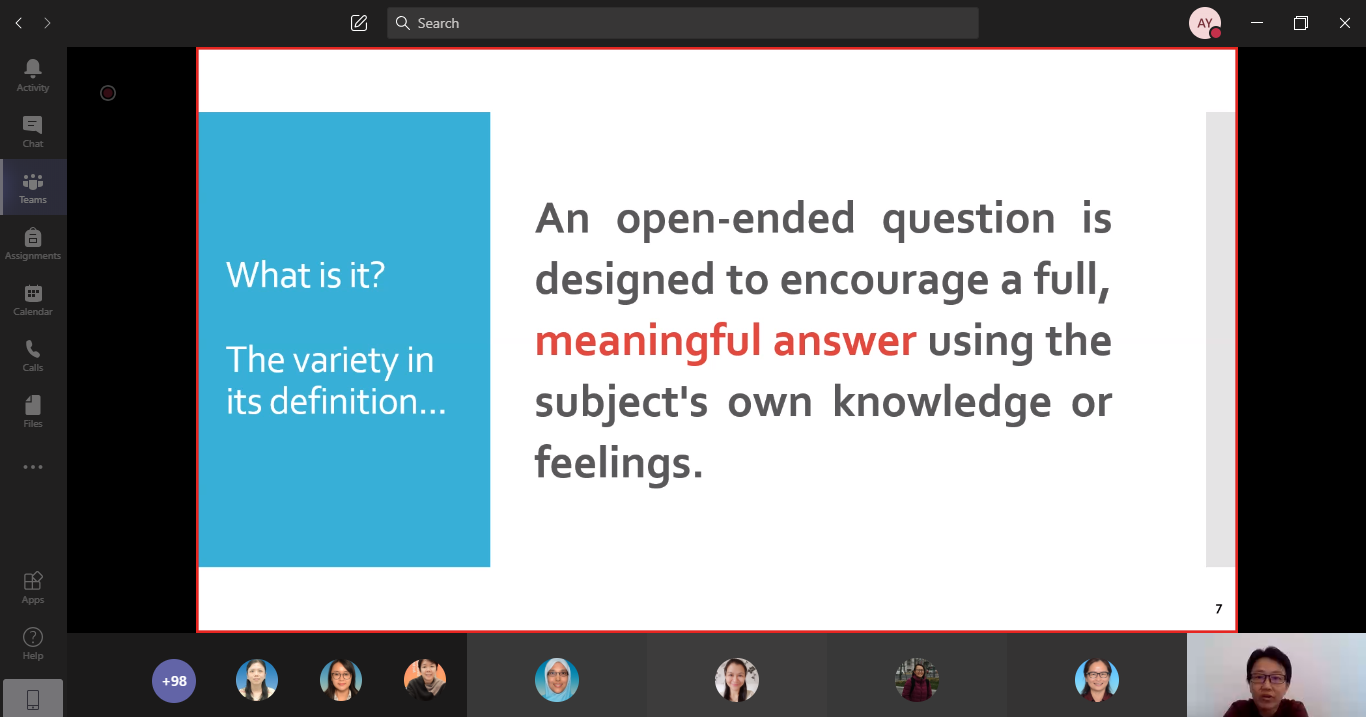
Dr Teoh defining
open-ended questions
Dr Teoh then provided an example
to demonstrate the difference between open-ended and close-ended questions,
noting that the latter can easily be tweaked to turn into the former with a
few minor changes. “Close-ended questions can be changed to open-ended
questions by making several changes. For example, you can provide additional
knowledge in the question to teach students or ask them their opinions and
reasons for their agreement or disagreement with the question statements,”
said Dr Teoh. She moved on to explain its characteristics and ended her talk
by explaining the reasons as well as the challenges faced by lecturers and
students in making and answering open-ended questions.
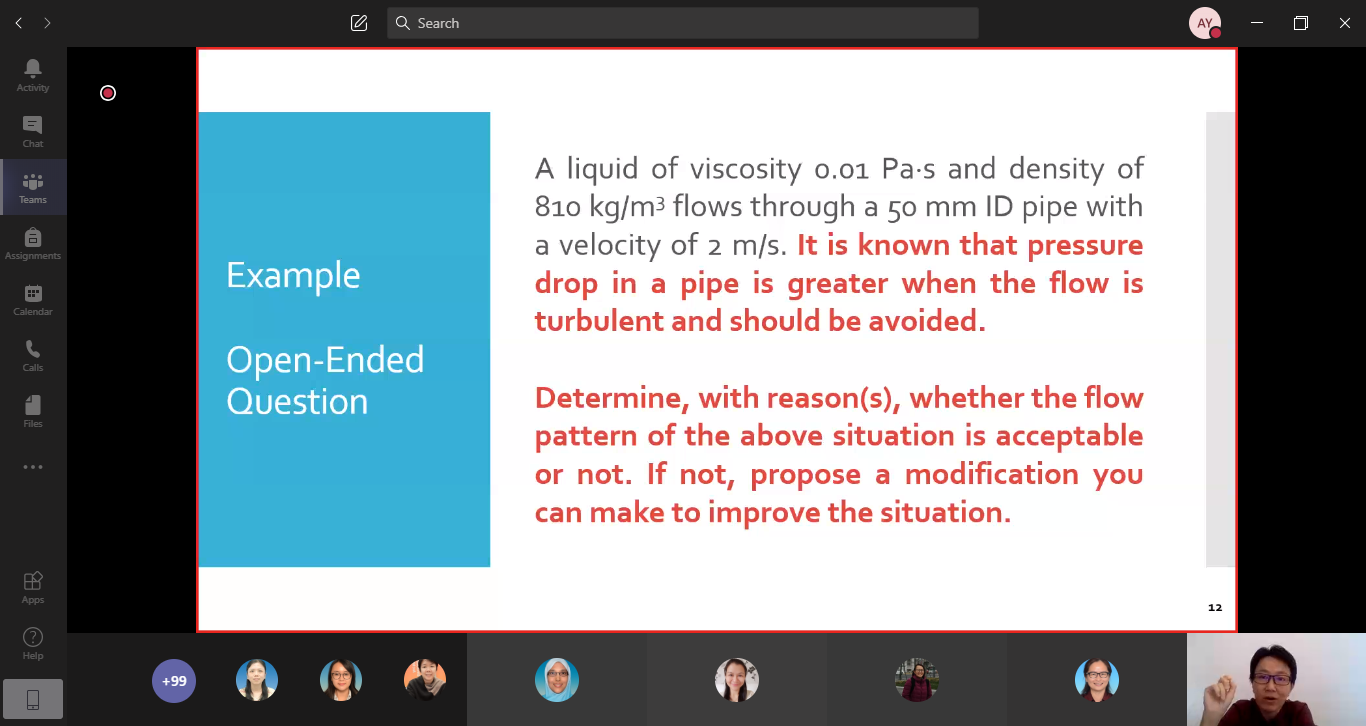
Dr Teoh showing an
example of a good open-ended question
The third and final speaker, Ting,
began her talk titled “How to use Autodesk Sketchbook” by explaining her
reasons behind using this application. She stated that Sketchbook is a
free-to-use drawing application. She said, “Sketchbook is not only
user-friendly, but it also helps me to produce drawings quickly compared to
when I draw during a physical class. By drawing and explaining, it can help
students remember the information easily and keep them focused during
class.”

Ting teaching the
participants to use Sketchbook
Ting then went on to demonstrate
the basic functions of Sketchbook whilst explaining how to use it. She
displayed several of its functions, such as creating and duplicate layering,
colouring, lassoing, and others. She also taught participants how to create
simple animations using a function called “Flipbook” in the Sketchbook. “In
Sketchbook, there is a function called Flipbook, which you can use to create
simple animations. I find this really useful because by showing animation,
some students will be able to understand the concept much more easily,” said
Ting.
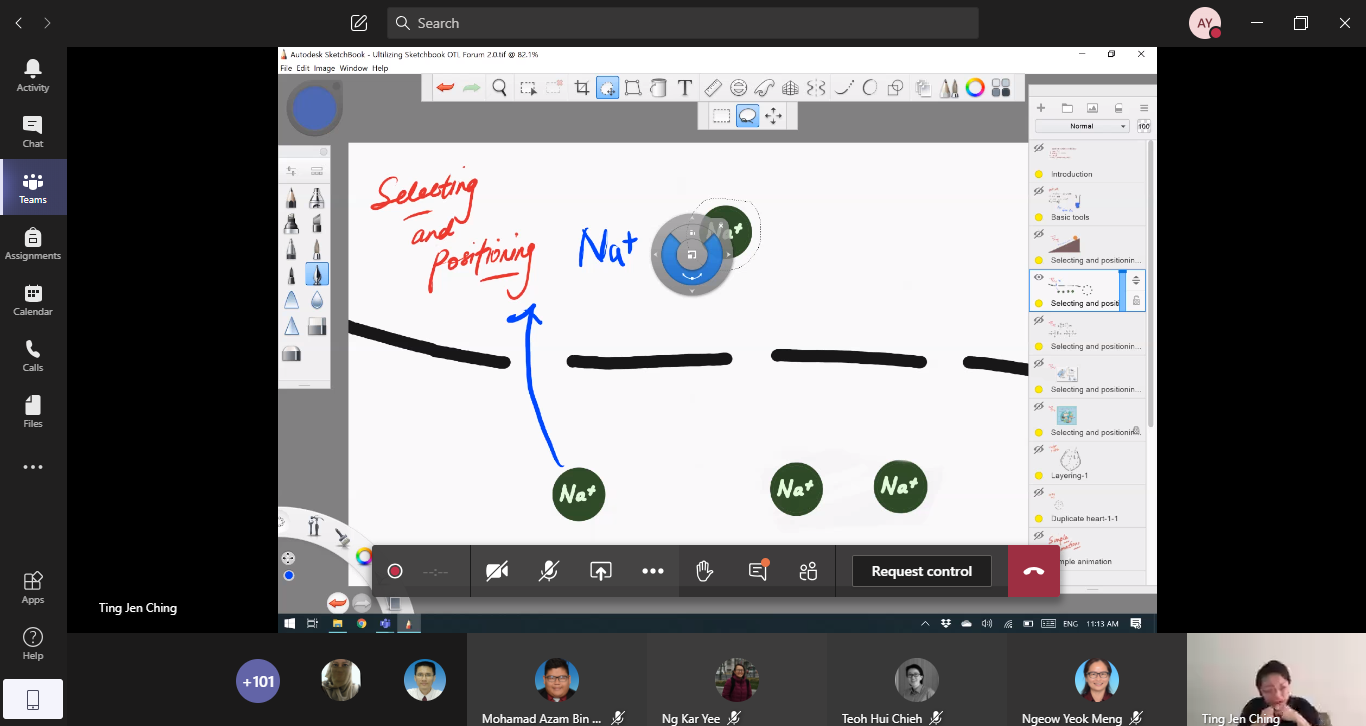
Ting demonstrating
how to create animations
The first session ended with a
brief Q&A discussion.
Following the success of the first
session, the second session was conducted via Microsoft Teams on 13 August
2020 where the invited speakers
were Centre for Research in Traditional Chinese Medicine
Chairperson-cum-Department of Chinese Medicine Head Assoc Prof
Dr Te Kian Keong, FCI lecturer Long Yew Foo and Institute of Chinese Studies
of Kampar Campus Dr Chou Wen Loong.
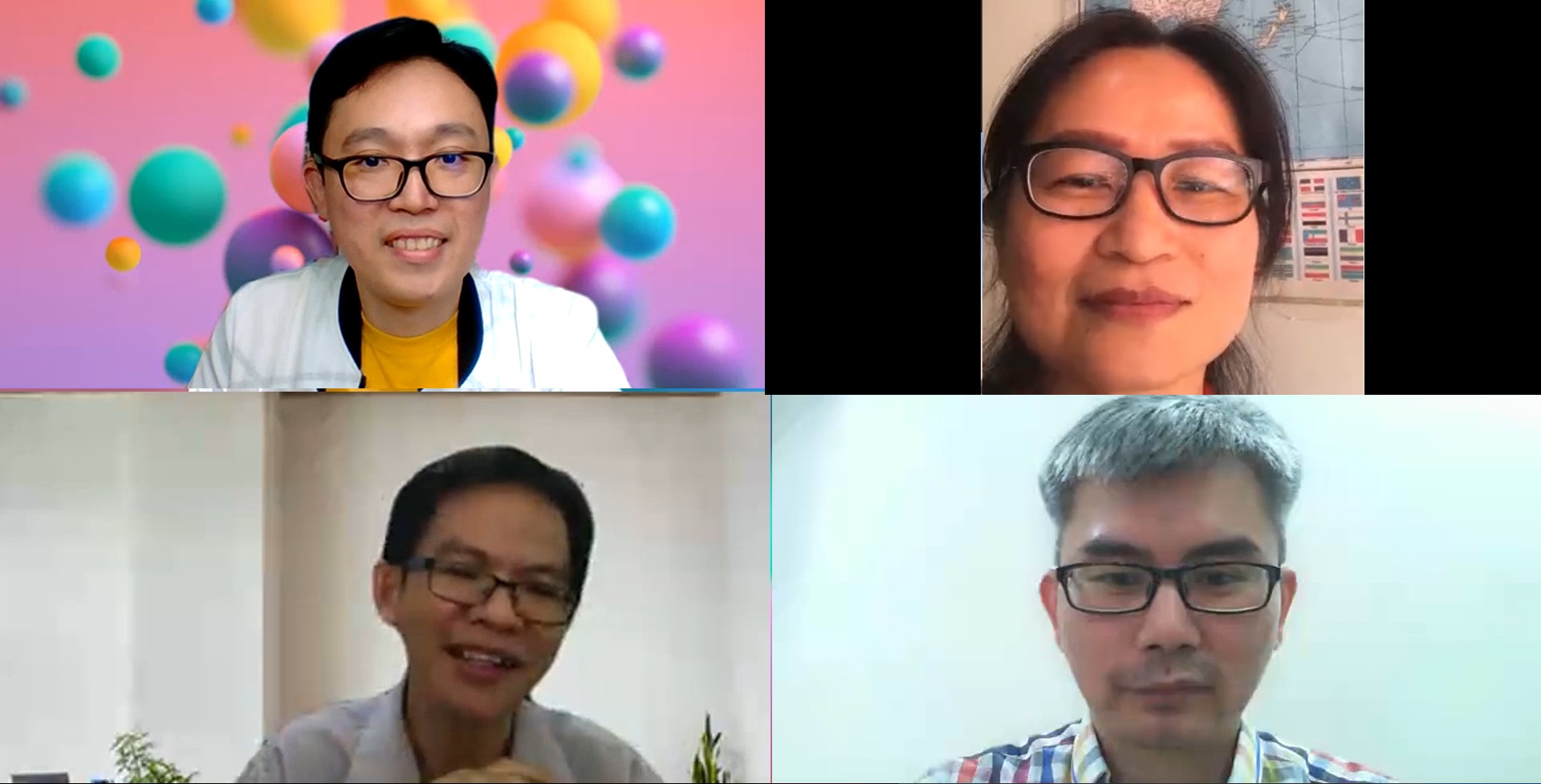
From top left,
clockwise: Long, Dr Ngeow, Dr Te and Dr Chou during the second session
The second session
started with Dr Te sharing on student
feedback about the overall experience of online and traditional learning.
“The Traditional Chinese Medicine (TCM) course was initiated in the year
2010. We have been conducting evaluation and receiving feedback from our
students every semester ever since,” said Dr Te. He presented the evaluation
results and compared the students’ feedback before the implementation of the
online class with the current one.
According to
him, a survey was conducted to see
whether
students wwere ready to return
to campus for physical classes or remain at home for online classes during
the October 2020 trimester. “A total of 74 students provided us with survey
feedback. According to the survey, 43 per cent of them are more likely to
attend hybrid classes; 35 per cent of them said they are ready for physical
classes and only 22 per cent of them are likely to take online classes.
Overall, most of the TCM students prefer blended learning,” he said. He also
shared some comments from students regarding their choice of the learning
method and explained that the feedback could provide additional insights
into improving the learning and teaching environment.

The event saw an
active interaction between the participants and speaker
Long, on the other hand, shared some tips on how to stay
connected with students, as well as how to keep them concentrated and
engaged in their learning. “You should
actively engage your students and help
them feel connected to their learning. You may
also use videos as part of your teaching which allows students to process
information faster and better,” said Long. He also mentioned that
students
would be much more motivated
if the teaching
is infused more joy and fun.
“To get
my students
energised and excited to learn, I use an
online spinner tool
like Wheel Decide to decide which chapter to teach that day,” he said. He
also advised to change the teaching background constantly to avoid boredom,
and let the students know if the class would be ending soon in order to
enhance their patience and focus.
Besides, he recommended lecturers to use student response options such as
Kahoot to get a better sense of the level of learning.
Dr Chou, who also shared some ways to encourage student engagement in remote
learning, introduced an online tool called Padlet to assist lecturers
in assessing the learning of students in the classroom. “It is an online
sharing tool that allows users to post text, images, documents, comments and
voice recordings on a digital board,” he said, adding that lecturers and
students can have a discussion simultaneously by posting their opinions
using Padlet. He also provided guidelines on how to use the tool
effectively to create digital support structures for students.
The second
session also ended with another quick Q&A session.
The last session saw three speakers, namely Faculty of Arts and Social Science (FAS) lecturer Dr Joanna Tan Tjin Ai, Faculty of Science (FSc) lecturer Mohan Selvaraju and Faculty of Information and Communication Technology (FICT) lecturer Ts Wong Chee Siang, sharing their respective topic of interest.
DDr Joanna Tan spoke about student engagement
particularly for Year 1 Semester 1 students. She highlighted the challenges
that occur when engaging with students. The challenges include connectivity;
lag and webcam issues; distractions such as loss or lack of concentration
and noise; non-conductive environment, and absence of human connection,
which refers to students’ inability to see the lecturer or coursemates
face-to-face for discussion. To overcome these issues, Dr Joanna Tan gave
several suggestions. The first suggestion was to obtain a data plan that can
provide a stable Internet connection for the online classes. The second
suggestion involved going to a location with a strong signal to avoid
disruption during the online classes. She also advised participants to be
more disciplined and focused during class by putting away their phones and
having better time management. She encouraged students to contact their
lecturers or friends to get information using social platforms such as
Microsoft Teams, WhatsApp and etcetera. Her final suggestion was to watch
the recording of the videos to recall or revise the lesson taught by the
lecturers. Other than that, Dr Joanna Tan also talked about the important
aspects of a good online learning experience, which included interaction
with coursemates, gaining feedback from the lecturers or tutors,
self-motivation and discipline.

Dr Joanna Tan’s sharing session in progress
Mohan, on the other hand, elaborated on a teaching
process called scaffolding. He provided the definition of scaffolding in
education and explained its goal which was to provide instructions just
beyond what the learners can do by themselves. The lecturers or tutors could
help scaffold their student to accomplish tasks they could otherwise not
complete without assistance. Mohan also highlighted the necessity of
scaffolding students as it encourages them to be independent and
self-regulated learners through deliberate and careful instructions. Besides
that, scaffolding is important to provide a continuous level of temporary
support to students. “Hence, this process involves incorporating extra
support and responsibility in the teaching process. Many educational experts
believe that scaffolding is an essential element of effective teaching,”
Mohan said and continued, “There are six types of scaffolding techniques
which are modelling, bridging, contextual, schema building, text
presentation and metacognitive development. Also, there are four components
of scaffolding which are exploring, measuring, promoting and evaluating
scaffolding.” He also said that lecturers who provide substantial support in
the early stage of a new concept whether it is verbal, procedural or
instructional, are employing scaffolding techniques.
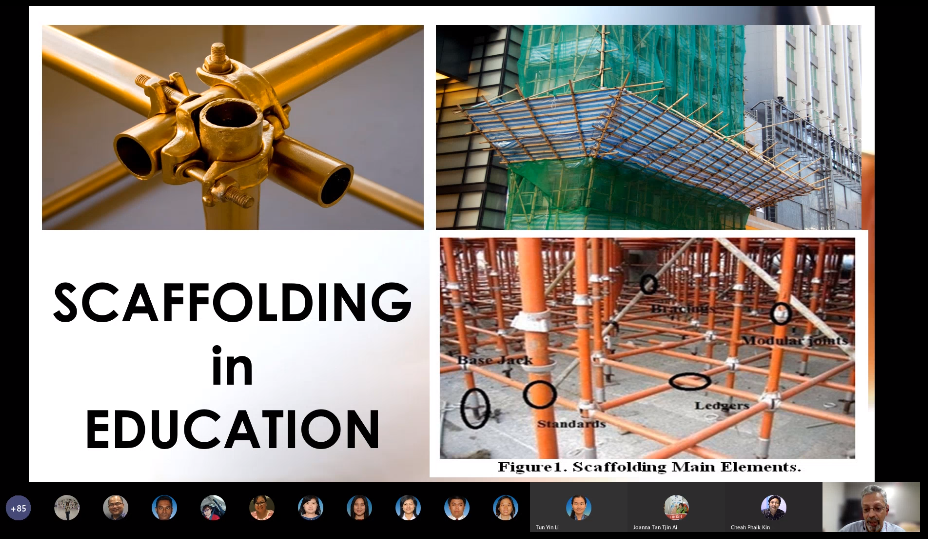
Mohan explaining the definition of scaffolding
LLastly, Ts Wong gave some insight into the ICT
setup and tools for OTL. He mentioned that in order to have an effective
OTL, one should have strong Internet connectivity. With that, Wong suggested
several broadbands— fibre optics (e.g. TM Unifi/Maxis Fiber) and cellular
networks (3G/4G) such as Maxis, Celcom, Digi and others. He also said that
network coverage is important, hence he encouraged participants to get a
prepaid plan before a postpaid plan, just to analyse the network coverage.
Wong also mentioned that there are several tools that need to be considered
when attending an online class or meeting. The tools include webcam and a
microphone which will be useful during online class or presentation. He also
helpfully recommended a few webcams and microphones to use for online
classes. Wong finally gave several tips to improve the Wi-Fi speed and
signal to ensure better connectivity. He recommended to conduct Wi-Fi speed
tests by using an app called, “Wi-Fi Analyzer” and use an external router to
boost the Wi-Fi speed and signal.

Ts Wong’s sharing session focused on ICT setup and tools for OTL
The third session ended with another brief Q&A
session.
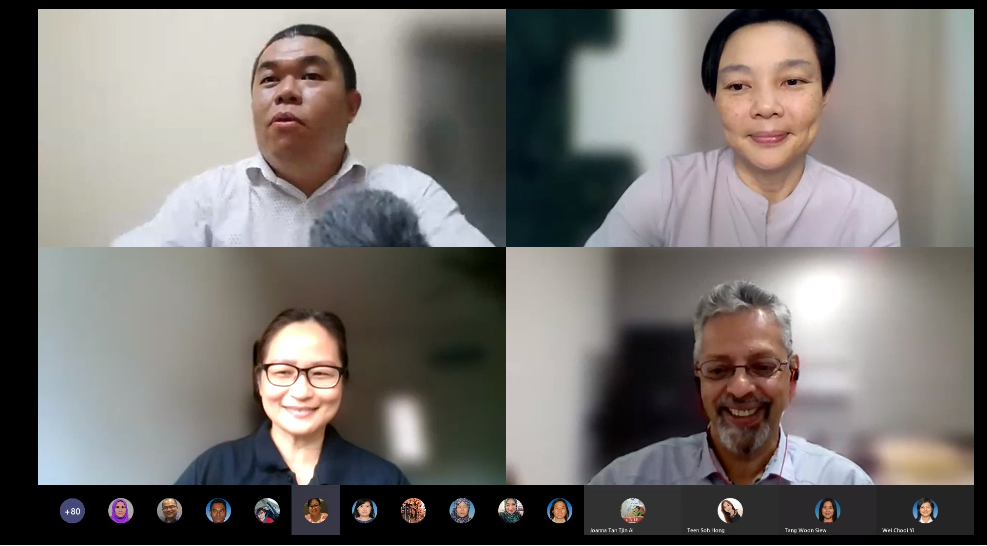
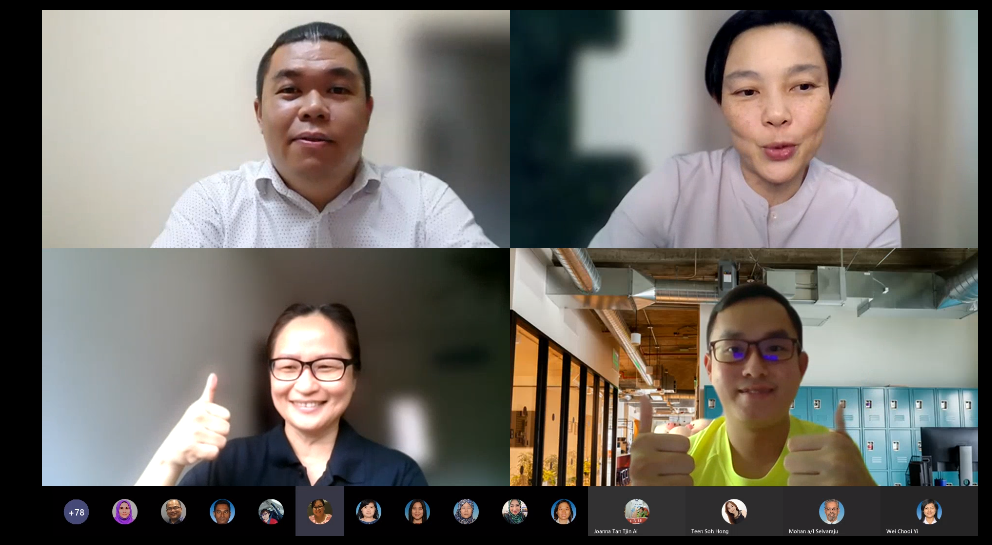
Group pictures at the end of the forum
![]()
Wholly owned by UTAR Education Foundation Co. No. 578227-M LEGAL STATEMENT TERM OF USAGE PRIVACY NOTICE